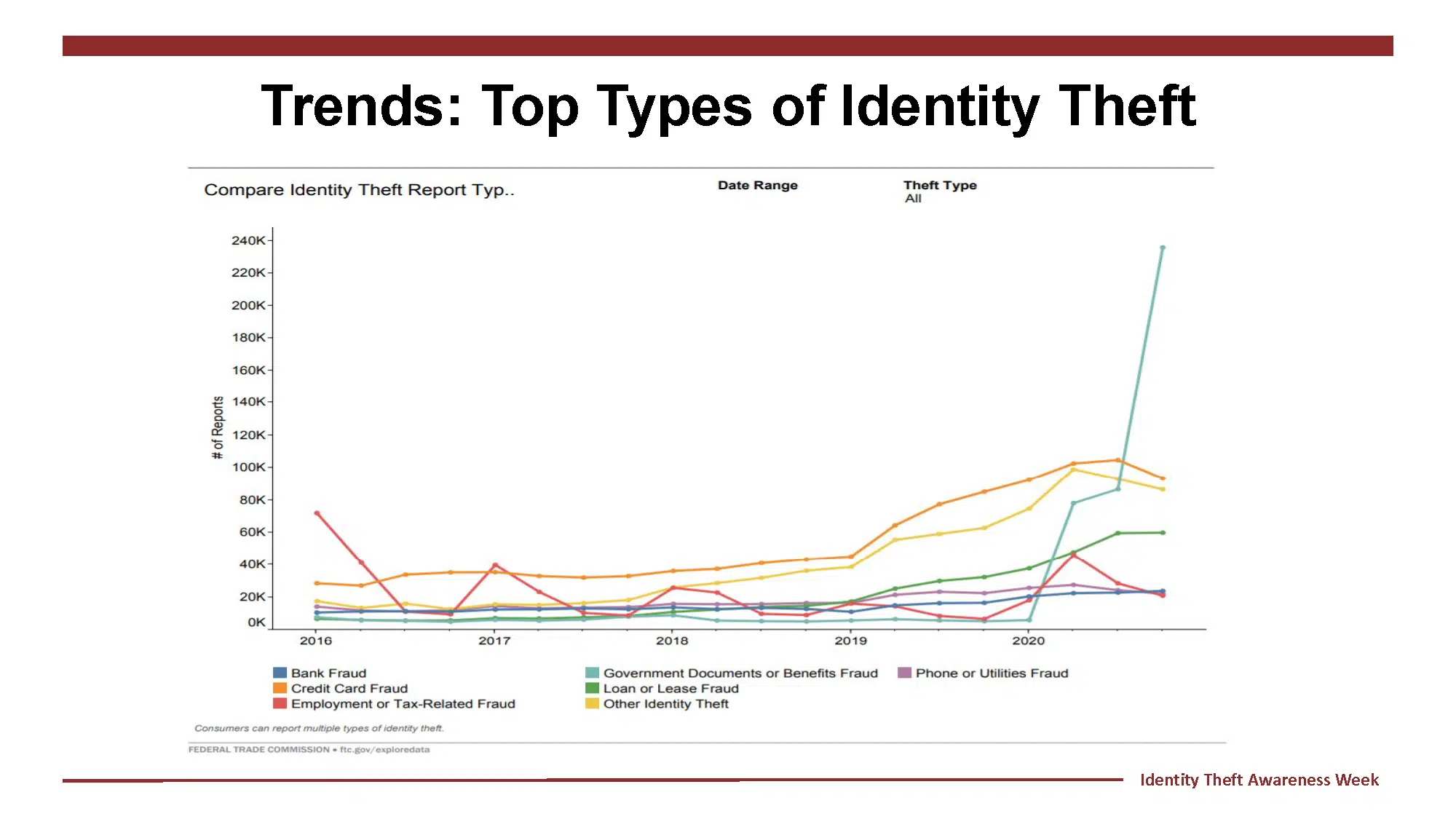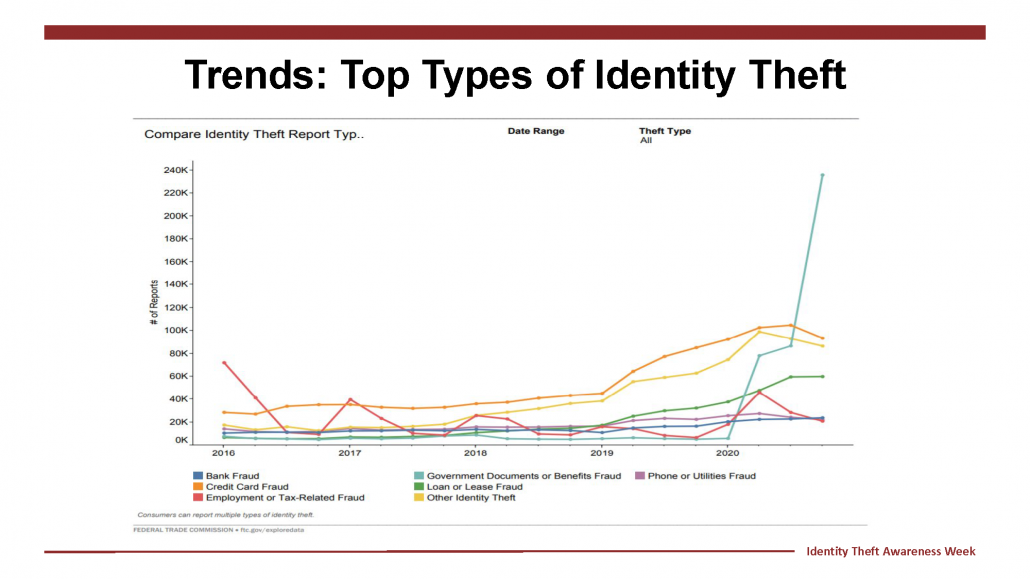2020 Fraud Trends Show a Rise in Imposter, Online Shopping and Phone Scams
Home Help Center 2020 Fraud Trends Show a Rise in Imposter, Online Shopping and Phone Scams

- According to the Federal Trade Commission (FTC), imposter scams were the top reported fraud in 2020. The FTC had approximately 500,000 reports of the scam, leading to an estimated $1.2 billion in lost funds.
- The Identity Theft Resource Center (ITRC) saw many different forms of identity-related imposter scams in 2020, including scammers pretending to be healthcare workers with COVID-19 tests or vaccines, family members that needed help, and government officials so they could steal stimulus payments.
- Online shopping and negative reviews were the second most reported fraud to the FTC in 2020, and phone calls and text messages continued to be the top method for scammers to attack consumers.
- The ITRC also saw online shopping scams spike, particularly during the holiday season, and saw an array of phone scams, including utility scams, voice cloning scams, and coronavirus testing scams linked to consumers’ identities.
- For more information on 2020 fraud trends or if someone believes they are a victim of fraud, they can visit www.idtheftcenter.org for resources or speak with an advisor toll-free by phone (888.400.5530) or live-chat.
2020 has come and gone, and scammers have left their mark. As Identity Theft Resource Center (ITRC) COO James E. Lee cited many times over the last year, 2020 was the Super Bowl, World Series, World Cup and NBA Finals all rolled into one for scammers. In April, ITRC CEO Eva Velasquez said she had never seen anything that would create a more massive scale of fraud than COVID-19. A recent report from the Federal Trade Commission (FTC) confirms that 2020 was a banner year for the bad guys. 2020 fraud trends reported by the FTC show 2.2 million people reported fraud, and $3.3 billion was lost to that fraud.

Watch now: Ripple Effects of COVID-19 Related Identity Theft & Tips to Protect Yourself in 2021
Imposter Scams Were the Top Reported Fraud in 2020
Scammers acted as many different groups of people in 2020. Some of the threat actors pretended to be government officials to steal stimulus payments or Small Business Administration (SBA) loans. Others pretended to be healthcare workers with COVID-19 tests or vaccines, or family members that needed help. Some even acted as fake charities.
The FTC reports that they received nearly 500,000 reports of imposter scams that cost people $1.2 billion, with a median loss of $850. Government and business imposter scams were among the top categories of COVID-19 and stimulus-related reports.
Other 2020 Fraud Trends & Findings
Online shopping and negative reviews were the second most reported fraud category of 2020, according to the FTC. The ITRC saw a spike in online shopping, particularly during the holiday season. Adobe Analytics reports U.S. consumers spent $188 billion shopping online during the holiday season, a 32 percent year-over-year increase. The U.S. Department of Commerce also validates the significance of the spike, showing online sales traditionally rise between one to two percent per year.
COVID-19 brought an increase in online shopping and then a wave of reports about sellers failing to deliver on promises, or just failing to deliver. The FTC says they got more than 350,000 reports, with people claiming they lost a total of more than $245 million, with a median loss of approximately $100.
Scams from phone calls and text messages continued to be the top method for scammers to target consumers. The ITRC saw numerous phone scams involving the misuse of personal information in 2020, like the utility scam, voice cloning scam and the coronavirus testing scam.
The FTC says there was an increase in the number of reports saying that scammers contacted them by text message. The ITRC saw numerous text message scams in 2020, including COVID-19 contamination scams, stimulus checks scams and election scams. The FTC had reports of many of the same text message scams, including stimulus relief, economic relief or loans for small businesses or “waiting packages.”
What Consumers Should Do
While every scam is different, consumers should:
- Never respond to any unknown or unsolicited messages they receive. Instead, people should reach out directly to the company or person the message claims to be from to verify the message’s validity.
- Never voluntarily give out any personally identifiable information (PII). People should only provide PII when necessary and confirm the company or organization asking for it is legitimate.
- Never click on any links, attachments or files in an unexpected or unsolicited message. Many times, the links, attachments and files lead to malware.
Anyone who wants more information on 2020 fraud trends, or believes they were a victim of fraud, can visit the ITRC website for additional resources. They can also contact an advisor toll-free by phone (888.400.5530) or by live-chat. All people have to do is visit www.idtheftcenter.org to get started..
How much information are you putting out there? It’s probably too much. To help you stop sharing Too Much Information, sign up for the In the Loop.
Get ID Theft News
Stay informed with alerts, newsletters, and notifications from the Identity Theft Resource Center

